1. Learning Process
1.1. learning (a relatively pernament change in behavior caused by experience)
1.2. incidental learning (casual, unintentional of knowledge
2. Cognitive Learning Theory (approaches that stress the importance of internal mental processes, this perspective views people as problem slovers who actively use information from the world around them to master their environments)
2.1. Observational learning (occurs when we watch the actions of others and note the reinforcements they receive for their behaviors)
2.1.1. attention
2.1.2. retention
2.1.3. product processes
2.1.4. motivation
2.1.5. observational learning
2.2. Frequency marketing (a popular technique that rewards regular purchasers with prizes that get better as they spend more)
3. Behavioral Learning Theory (assume that learning takes place as the result of responses to external events)
3.1. Classical conditioning (occurs when the stimulus that elicits a response is paired with another stimulus that initially does not elicit a response on its own)
3.1.1. stimulus generalization (refers to the tendency of stimuli similar to a CS to evoke similar, conditioned responses)
3.1.1.1. family brand (many products capitalize on the reputation of a company name)
3.1.1.2. product line extensions (the marketers add related products to an established brand)
3.1.1.3. licensing (popular marketing strategy that pays for the right to link a product or service to the name of a well-known brand or designer)
3.1.1.4. look - alike packaging (distinctive packaging designs create strong associations with a particular brand)
3.1.2. stimulus discrimination (occurs when a UCS does not follow a stimulus similar to a CS)
3.1.2.1. advertising wear - out (the condition that occurs when the consumers become so used to hearing or seeing a marketing stimulus that they no longer pay attention to it)
3.2. Instrumental conditioning (occurs when we learn to perform behaviors that produce positive outcomes and avoid those that yield negative outcomes)
3.2.1. Reinforcement Schedules
3.2.1.1. fixed ratio reinforcement (reinforcement occurs only after a fixed number of responses)
3.2.1.2. variable ratio reinforcement (you get reinforced after a certain number of responses but you don’t know how many responses are required)
3.2.1.3. fixed interval reinforcement (after a specified time period has passed, the first response you make brings the reward)
3.2.1.4. variable interval reinforcement (the time that must pass before one gets reinforced varies based on some average)
3.2.2. Ways
3.2.2.1. Positive Reinforcement (positive event strengthens responses preceding occurrance)
3.2.2.2. Extinction (removal positive event weakens responses preceding occurrance)
3.2.2.3. Punishment (negative event weakens responses that are follow by negative outcomes
3.2.2.4. Negative Reinforcement (removal negative event strengthens responses that allow avoidance of negative outcomes)
